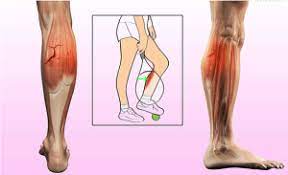Postnatal Exercise
Table of Contents
What is Postnatal Exercise?
Postnatal exercise refers to physical activity that is specifically designed and performed by women after giving birth. It is aimed at helping them regain their strength, fitness, and overall well-being after pregnancy and childbirth.
Exercises that strengthen your abdominal muscles such as pelvic tilts are suitable to add to your postpartum workout regimen. To build up the muscles in your pelvic floor, use kegel exercises. Using belly breathing will help you re-align your core’s breathing. Posing a happy baby can help to relax the muscles in your pelvic floor.
Your physical and mental health can be improved by exercising after giving birth. It can:
- Help your body become firmer and more muscular
- Reduce your fatigue by increasing your energy level and enhancing your sense of well-being.
- Encourage losing weight
- Improve your cardiovascular health and muscle strength
- Strengthen the abdominal muscles
When to start postnatal exercises
You can usually start light exercise (like walking) after giving birth as soon as it’s comfortable. Start when you’re ready. Some women will be motivated to start working out early. Discuss the best time to restart your exercise regimen with your doctor.
Most pregnancy-related changes will have returned to normal six weeks after giving birth. It might take a little longer to feel ready to begin exercising if you underwent a cesarean section, had a challenging birth, or experienced complications. If you didn’t exercise while you were pregnant, start out easy and work your way up to harder exercises.
Don’t forget that your lower back and abdominal muscles are weaker than they once were. You can hurt yourself more easily by overstretching or twisting because your ligaments and joints are also more flexible and pliable. Avoid any sports or exercises that require quick direction changes or high impact.
Breastfeeding and Exercise
Studies have shown that, as long as fluid and calorie intake are maintained, either frequent or vigorous exercise has no negative effects on a mother’s ability to successfully breastfeed. High-intensity exercise, however, may cause lactic acid to build up in breast milk and produce a sour taste that a baby might not enjoy. By sticking to low- to moderate-intensity exercise and drinking plenty of fluids both during and after their workout, breastfeeding women can avoid this potential issue.
Creating Time for Postnatal Exercise
Finding time for exercise can be difficult when you are taking care of a newborn. You might simply be too exhausted on some days to put in a full workout. However, that does not imply that you should neglect your physical health. Attempt your best. Some suggestions are:
Ask your partner, family, and friends for help. To improve motivation, start with a run with a buddy.
All you need is a pair of comfortable shoes to get back in shape by walking. You can do it almost anywhere at any time for free. You may also bring your young child.
While you perform abdominal exercises, include your infant who is curled up next to you on the floor.
It’s okay to exercise for 10 minutes at a time. Although 150 minutes a week of physical activity (as recommended by the National Physical Activity Guidelines) may seem like a lot of time, it doesn’t have to be done all at once. It’s best to spread out your activity throughout the week, but you can also divide it up into smaller time blocks during the day.
If your exercise plans fail, try not to be too hard on yourself. Just try your best, and keep in mind that as your child settles into a routine, you will have more time to yourself.
You can perform abdominal and pelvic floor exercises while working on other things, whether you’re standing or sitting. Try performing the exercises whenever you do particular activities, like breastfeeding or driving a car, to help you remember. Refer to the Better Health Channel article titled “Postnatal exercise – sample workout” for more information on tummy and pelvic floor exercises.
Instead of making quick trips in the car, take your baby along in the pram.
Consider creating a DVD collection for your home gym. To avoid always having to find an hour or more to exercise, it might be a good idea to include a few tapes that offer shorter workouts as well (such as those that are 15 or 30 minutes long).
Suggestions for general exercise safety
Be guided by your doctor or midwife, but here are some general recommendations:
Put on a supportive bra that is appropriate for you. Don’t rely on the sports bra you were wearing before becoming pregnant because your back and cup size probably changed. To get a new one, get measured.
Your workouts shouldn’t be painful. Stop exercising immediately and seek medical attention if necessary if you experience any pain or other strange symptoms.
Types of Postnatal Exercises
Pelvic floor exercises (Kegels)
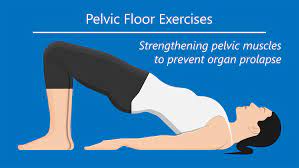
It’s possible that your body already knows how to perform a Kegel if you listened to your doctor’s advice while you were pregnant. You can strengthen your pelvic floor muscles during the postpartum period by continuing these exercises.
- Tighten your pelvic floor muscles
- Hold for 10 seconds.
- Repeat throughout the day.
Diaphragmatic breathing
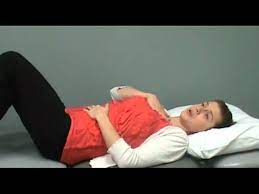
You can start practicing diaphragmatic breathing as soon as a few days after giving birth. You can unwind and lower your stress by taking a few minutes each day to concentrate on your breathing. Additionally, it can enhance core stability and slow breathing. It can be done in sitting up or lying down position.
On a yoga mat, lie flat on the ground.
Focus on letting go of the tension throughout your entire body, from your toes to the top of your head.
Keep one hand on your chest, while the other on your stomach.
Inhale deeply through your nose. Your stomach will grow as a result, but your chest should largely stay still. Inhale for two to three seconds.
Keep one hand on the stomach and one on the chest as you slowly exhale.
Repeat continuously for two to three minutes.
Walking

The first few months after giving birth are ideal for testing out the brand-new jogging stroller your BFF gave you. Your body will get an incredible workout while pushing a newborn, especially if you can find a route with some hills.
As you gain strength, you might think about pausing every 10 to 15 minutes to do a few bodyweight squats. Take your infant out of the pram and hold them in front of you while squatting if the weather is pleasant. Your backside will benefit greatly from the added resistance, and your child will enjoy spending time with you in person.
Swiss ball bird dog holds
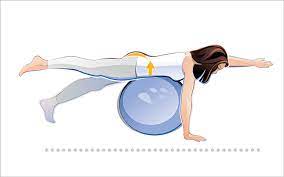
This exercise improves posture, stability, and lower back pain, which is a fairly typical side effect of childbirth. To perform this move, you’ll need a stability or exercise ball (you can buy one online here).
Lay down on top of the ball, covering it with your torso. Your palms should be flat on the floor, and your toes should be touching it.
Lift your left foot and right arm at the same time as you look down at the ground. For one to two seconds, hold.
Then Reelax, and switch sides.
20 times on each side, alternating.
Cat-Camel in tabletop

The Cat-Camel stretch is a basic yoga posture that strengthens the core, supports back muscles, and encourages spine mobility. Including this exercise in your postpartum workouts can help with circulation, relaxation, and back pain relief.
Sit on all fours on the ground. Maintain a neutral spine, a flat back, and a downward-facing gaze. Your knees will be directly under your hips and your wrists under your shoulders.
Take a long, deep breath in. Raise your spine towards the ceiling as you exhale. The distance between your head and tailbone will increase.
Hold for one to two seconds while in the cat position. Then, to assume the cow position, inhale, arch your back, lift your tailbone and head towards the sky, and relax your belly to the floor.
Continue doing this for about 60 seconds.
Swiss ball glute bridge
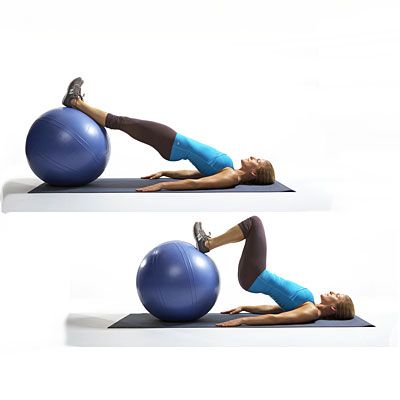
Swiss ball glute bridge exercise is excellent for strengthening the core and pelvic floor. It strengthens the hamstrings, glutes, quadriceps, and abdominal muscles. To perform this move, you’ll need a stability or exercise ball.
Begin with a stability ball by your feet and a flat back on the ground with your knees bent.
Put your feet flat on the ball, drive your heels in, and lift your hips high. Make use of your hamstring and gluteal muscles to help. Your body should be in a straight line, and your shoulders and upper back should remain in contact with the floor.
Keep the ball still while returning to the starting position after a brief hold at the top.
Perform three to four sets of ten to twenty repetitions each.
Postpartum planks (aka standard plank hold)
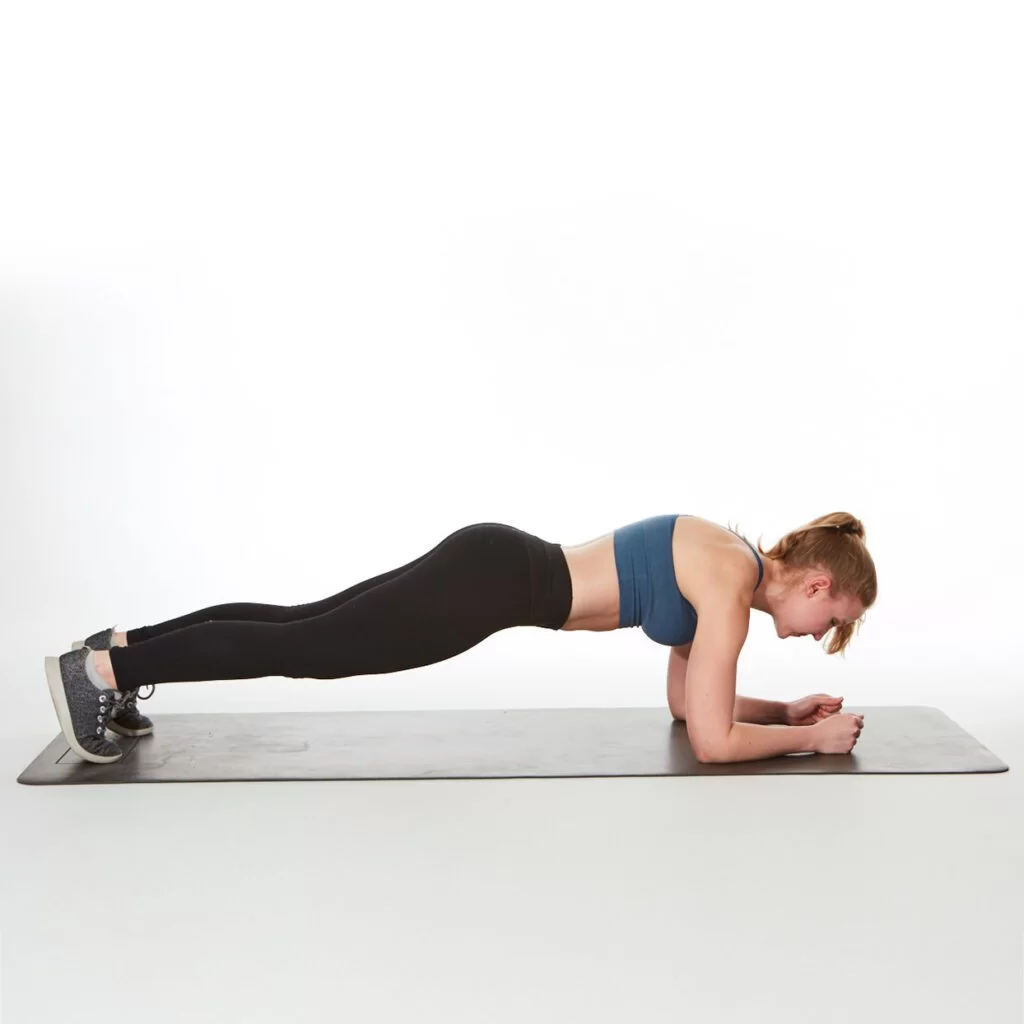
The standard plank is a fantastic all-around exercise that strengthens your upper body muscles, retrains your core, and lifts your glutes. As long as you had a straightforward vaginal birth, you can do a standard plank within a few weeks of giving birth.
If this exercise requires modification, Reilly advises beginning on your knees before performing a full plank.
On your stomach, place your forearms on the ground with your elbows tucked under your shoulders. Your toes should be on the ground and your feet flexed.
Only your forearms and toes should touch the ground as you rise up on your toes while engaging your glutes and core. In a straight line, your body should be a few inches off the ground.
Bring your belly button to your spine and tighten your buttocks and upper body by contracting your deep abdominal muscles.
Normal breathing for 30 seconds while holding it.
One to two more times.
You should lengthen the hold as you get stronger.
Side plank leg lifts

An alternative to the standard plank is the side plank leg lift. You might want to reserve this move for 6 to 8 weeks after giving birth because it is more advanced. Your glutes, obliques, and, to a lesser extent, your shoulder muscles, will all be worked during this exercise.
On your stomach, place your forearms on the ground with your elbows tucked under your shoulders. Your toes should be on the ground and your feet flexed.
Turn around while standing on one forearm.
Put yourself in a side plank position by lifting your body off the ground.
For 20 to 30 seconds, raise your top leg and hold it there, or raise your legs repeatedly until the timer goes off.
Execute one to two sets on each side.
Pelvic tilt

To build up your abdominal muscles, practice the pelvic tilt several times per day. Lay on the ground on your back with your knees bent. By contracting your abdominal muscles and slightly raising your pelvis, you can flatten your back against the floor.
Maintain for up to 10 seconds.
Start with five repetitions and increase to 10 to 20.
Swimming

Swimming works your heart and lungs incredibly well without putting too much strain on your joints.
Swimming or aqua aerobics classes are good postpartum exercises because they are gentle on the body after delivery and help postpartum women add muscle tone.
The pool should be avoided, though, until any postpartum bleeding has stopped and any scarring from a cesarean operation has healed.
Yoga

Yoga encourages relaxation in the post-birth whirlwind while assisting in the strengthening of core muscles and the prevention of back pain, which is why many postnatal women find it helpful.
postpartum yoga is a great way to regain strength in specific areas, like your core muscles. It’s also a good time to put your energy into yourself and connect with other mothers.
You can even bring your baby to yoga classes. Find the best mother and child exercise classes here, or use an app like TruBe to arrange for a private yoga instructor to visit you at home.
Pilates

Pilates targets the muscles that typically weaken during pregnancy, making it one of the most effective prenatal and postnatal exercises.
Pilates is non-impact, compared to other forms of exercise, which lowers the risk of injury. As a result, it’s not only healthy and advisable physically, but knowing that you’re exercising safely can also help to lower anxiety and reassure you during classes.
Due to the intense concentration and immersion required by Pilates, which is a highly focused form of exercise, there are additional mental and emotional advantages.
Gentle weight training
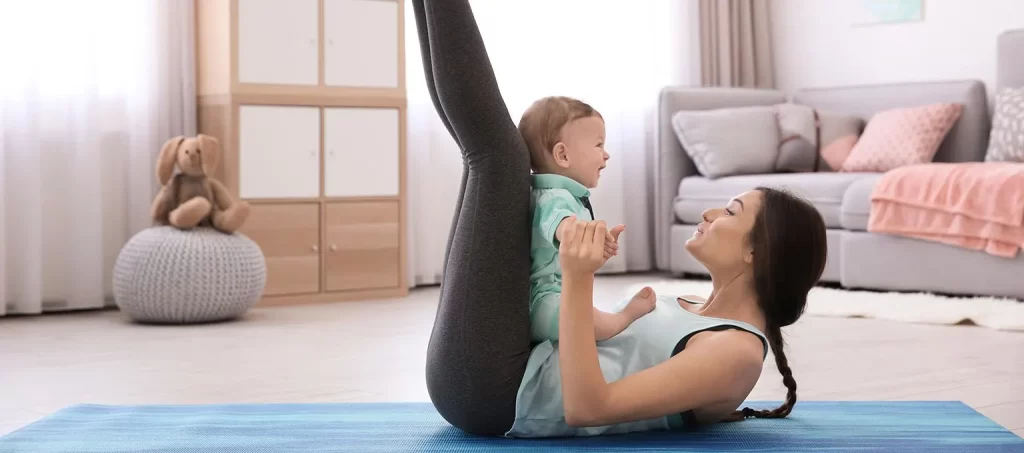
Lightweight exercise is a great postpartum activity because it tones your muscles and strengthens your core, but make sure it’s safe with your doctor first.
Work your way back to using the heavier weights you previously used by beginning with lighter weights.
Exercises should be carried out at a controlled tempo as this is our go-to method for teaching movement and instilling good form. Take five to six seconds to lower and five to ascend a weightless bar, for instance. You’ll discover that without loading the bar, you can maintain your strength while enhancing movement quality and body composition. Squats are an example of a comprehensive movement that can help strengthen the body properly and even work to reverse abdominal diastasis recti.
Light cardio

Effective postnatal exercise includes light aerobic activity.
For women who did not engage in an intense fitness regimen prior to becoming pregnant, brisk walking is the best option because it is gentle but keeps you in shape and healthy without jarring your knees and ankles. If you can, try to walk briskly for 30 minutes four times per week; adding a pram push is an added bonus.
Other excellent postnatal exercises include group classes like cycling, Zumba, or dance, which can help you burn calories and raise your heart rate.
Where to get help
- Your doctor
- Your midwife
- Physiotherapist
Things to remember
Before beginning any postnatal exercise program, always check with your doctor or midwife.
You’ll have more time to yourself as your baby settles into a predictable routine, so don’t be too hard on yourself if your exercise plans fail.
Summary
Any postnatal exercise program should always be started after consulting with your doctor or midwife.
If your exercise plans fail, don’t be too hard on yourself; as your child settles into a routine, you’ll have more time to yourself.
FAQs
What is the best exercise for postpartum?
Yoga, water aerobics, walking, swimming, and other exercises are all suitable for postpartum exercise. Stretching and low-impact aerobic exercises are frequently best for beginners. The elliptical machine, stair climber, and stationary bike at the gym are additional suggested low-impact options.
Why is exercise important after delivery?
Postpartum exercise is essential for all women since it not only aids in physical health recovery but also improves mood, sleep, decreases stress levels, and lowers the risk of postpartum depression.
What are the aims of postnatal care?
The experts will check your baby for these anomalies during your postnatal care and give you advice on the best course of action and early treatment. Additionally, they will keep an eye out for any complications related to childbirth or medical error and promptly make any necessary corrections.



